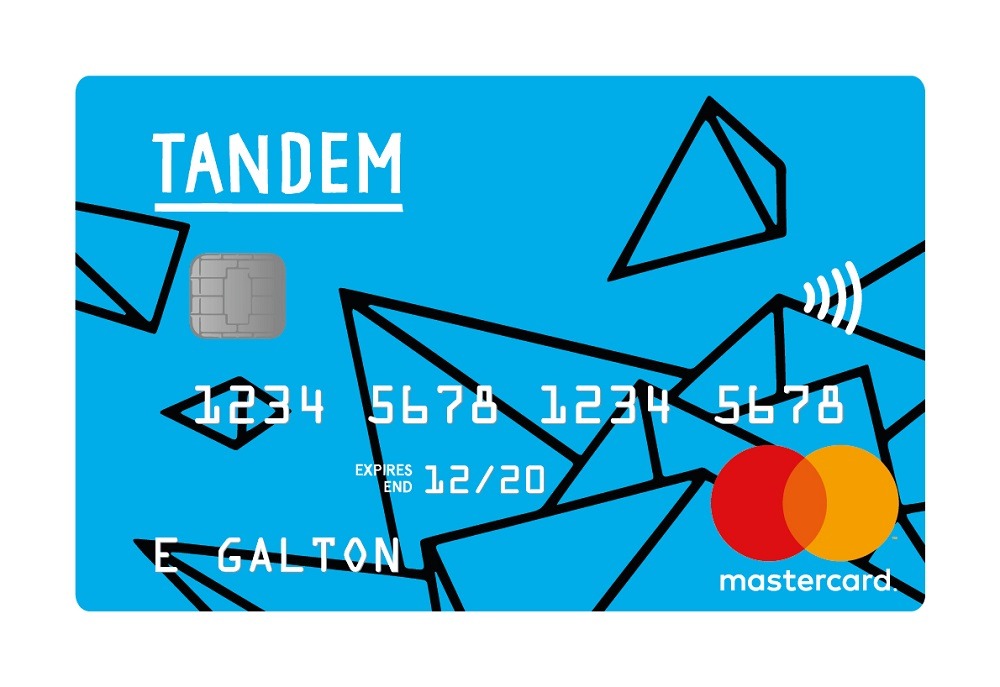Tandem's banking operations aim to take advantage of open banking rules and give consumers a range of digital spending and savings options

Tandem is a UK digital bank (Credit: Tandem)
The use of personalised money-management tools is on the rise as customers switch to digital finance options – UK challenger bank Tandem is one of those providing new ways for people to control their cash.
From digital-first current accounts, that help customers set spending targets, to mobile wealth management platforms, fintech companies have been busy finding creative ways for customers to lead more flexible financial lives.
Tandem recently announced its own Autosavings account, which uses machine learning to calculate how much customers can afford to put aside, as well as a partnership with digital payments specialist Token to improve its open banking capabilities.
The company has had some notable ups and downs along its way to becoming one of the most recognisable names on the UK financial disruptor stage, including losing its banking licence after a last-gasp withdrawal of investment, and the takeover of the former banking division of luxury retailer Harrods.
Here we take a closer look at the company and its innovative credit and savings products, as well as its latest announcements as it looks to scale up its digital finance operations.
Tandem Money faced struggles to get its banking operations underway
Founded in 2013 by Ricky Knox, Matt Cooper and Michael Kent, London-based Tandem had a rocky start to its challenger bank ambitions when an expected £29m in funding from Chinese investor Sanpower was pulled at the last minute.
Having already secured its banking licence, the funds had been earmarked to drive Tandem’s banking business, but the decision by Sanpower to withdraw its offer left the fintech unable to launch its planned savings products – and ultimately to surrender its banking licence.
At the time, CEO Ricky Knox said: “While this investment not completing is disappointing, it does not change our vision: to build a service that helps our customers improve their lives with money and a business that delivers long-term returns for our investors.

“The only change for customers is that we will no longer be launching savings accounts in the short term.
“Our app will still help our customers manage their money better and actually find them cash, and our fair credit card will launch in a few months.
“We will be in a position to quickly re-apply for our permissions to offer savings accounts at the right time for our customers.”
It was no doubt a blow to the company, dashing its hopes of launching as a fully-accredited bank, but perseverance paid off and in January 2018 when it finalised the acquisition of Harrods Bank – the former banking division of the luxury London department store.
Harrods Bank had been separated from the retail division for some years at the request of the UK government, but had maintained a client base of high-net-worth individuals, a high-value loan book and substantial deposits.
The acquisition gave Tandem access to all these assets, bringing around £80m in capital into the business, and paving the way for it to regain its banking licence from UK regulators.
The Harrods Bank name was retired, and the combined financial services re-branded as Tandem Bank.
Tandem’s personal finance products
Since getting back on track with its personal banking plans, Tandem has gone on to launch its own savings accounts and credit cards alongside its digital finance management app, and has built up a customer base of more than 500,000 people.
The app provides a way for customers to manage their finances via their mobile devices, providing spending and budgeting notifications, utility switching support, and bill management highlights.
Tandem has also branched out into credit cards, launching two versions – one that gives cashback to users and another designed specifically for people without a significant credit history.

Both products appeal to frequent travellers by offering zero fees on purchases made abroad, and feature spending insights and notifications via the Tandem app.
The Journey card was launched to help people with limited credit history begin to build up a good credit score, by starting customers off on low credit limits of between £150 and £1,200.
These limits can be reviewed after a period, with the potential for an extension if things have been going well.
The Cashback card gives users 0.5% cashback on worldwide purchases, and has initial credit limits from £500 to £12,000.
Tandem customers can also access a range of fixed-term savings accounts, which are protected by the Financial Services Compensation Scheme up to a value of £85,000.
Savers can tuck their money away for either one, two or three years, and receive interest rates of 1.90%, 2.25% and 2.40% respectively.
The Autosavings account
Last week, Tandem announced its Autosavings account, which offers 0.5% interest and a function for users to round up the cost of their purchases to the nearest pound and deposit the spare change.
The account also uses a machine learning algorithm that assesses the incomings and outgoings of an individual’s linked current account, and makes savings recommendations based on a user-selected savings target.
Mr Knox said: “With Autosavings we’re giving people the ultimate tool to build positive savings habits, earn interest, and even absorb the costs associated with paying money into your Tandem account.”
Tandem’s open banking link-up with Token
As banks across Europe scramble to ensure PSD2 compliance, Tandem took steps to boost its open banking capabilities beyond core compliance by partnering with financial technology provider Token this week.
Token builds APIs (application programming interfaces) for the open banking environment and its platform facilitates payments between different financial institutions in accordance with PSD2 regulations.
Mr Knox added: “So far, most open banking services have focused on account aggregation. Our approach goes much further.
“With Token’s platform we can comply with the PSD2 regulation quickly and efficiently.
“This means we can focus our efforts on differentiating ourselves with an improved user experience – leveraging both AISP (account information service provider) and PISP (payment initiation service provider) use cases to provide smarter, more personalised banking products that solve real peoples’ problems with money.”
